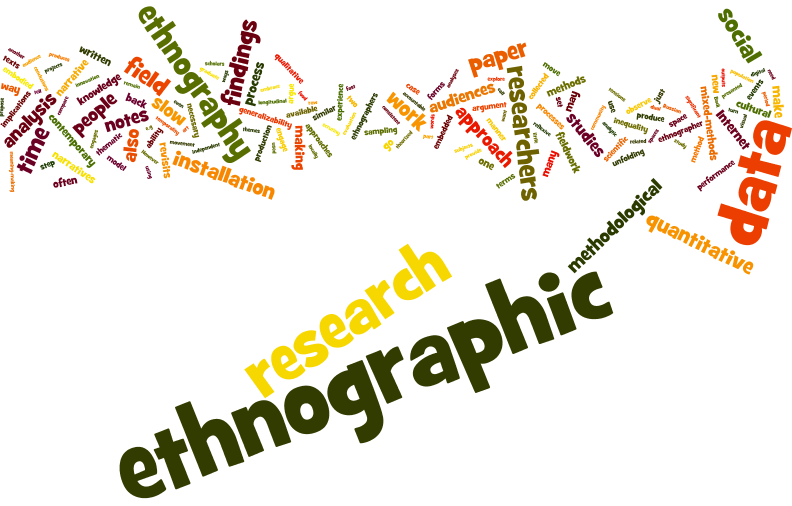
- Home
- Services
- Products
- About Us
- News
- Industries
- Resources
- Contact
Newtown Square • Philadelphia • Detroit • Cincinnati • Sacramento • Rochester • Willow Grove • Orlando • Buffalo


According to the Insights Association, “Ethnography involves the study of a small group of subjects in their
own environment. … The ethnographer attempts to get a detailed understanding of the circumstances of the few
subjects being studied. Ethnographic accounts, then, are both descriptive and interpretive; descriptive,
because detail is so crucial, and interpretive, because the ethnographer must determine the significance of
what she observes without gathering broad, statistical information.”
Ethnographic research participants are recruited to allow the interviewer into their environment, where the
interviewer can observe the participant engage in the behavior in question. That might be at home for
testing a product, an information search, or a decision. It might be the office or job site for a B2B
ethnography. Or it might be a restaurant or hotel, depending on the research topic. The key to ethnography
is that the interviewer joins the participant in the participant’s environment.
A second important key to ethnography is that it emphasizes observing behavior or social phenomena, rather
than the focus of testing hypotheses in traditional marketing research. The interviewer wants to watch the
participant complete a task, whether that means baking a cake from a mix or using a power tool on a
construction site. The interviewer will ask clarifying questions to explore and understand why the
participant made specific choices in completing the tasks. Interviews are usually audio-recorded but may
also include video recording.
In ethnography, the researcher gathers what is available, what is normal, what it is that people do, what
they say, and how they work. Then, the researcher looks for patterns in the results of the interviews, how
ideas and beliefs through language, and how they behave as expressed through the actions that the
interviewer observed.
There are several challenges to ethnographic research. First and foremost, the interviewer must be both
participant and observer in the setting with the participant. Highly-trained ethnographic researchers are
needed to walk this fine line without introducing a personal bias into the results. Ethnographic research
can take longer than traditional marketing research qualitative work, which may be an obstacle for some
projects. Because participants may be hesitant to invite interviewers into their environment, it may take
longer to recruit for ethnographies. And finally, you may be limited geographically in where you can recruit
participants and incentive costs will probably be higher than with other research methods.
Despite the drawbacks, ethnographic research has been growing in popularity, especially in research for
innovation and strategy, because it can provide uniquely powerful insights.
The main benefit of ethnography is that it provides a fresh perspective on consumer behavior. Some of the questions to be answered by ethnographic research include:
Increasing Weekend Get-Away Visitors
A major city in the Southeastern U.S. wanted to increase weekend-travel by visitors from nearby states.
While the client thought they had a lot to offer visitors, they wondered how different groups of potential
visitors made their decisions about weekend get-aways. Participants were recruited from neighboring states,
focusing on residents of cities within a 3-hour car trip. Families and young couples were the focus of this
research. Participants were all planning a weekend get-away, and interviewers observed how they decided
where to go on this get-away, including how they completed the research about accommodations and activities,
who made the final decision, and how the plan was implemented. If the city was not their get-away
destination, participants were offered an attractive incentive to choose the city. Interviewers then
observed the participants throughout their visit to the city. The research identified several critical pain
points that were addressed through additional information and marketing communications, with the result of
increasing neighboring state visitor traffic by 15%.
Housecleaning for People with Allergies
Another example of ethnographic research , as reported in Marketing Week, involved German household
appliance manufacturer, Miele. Specifically, Miele wanted to understand how people clean their homes if they
have a family member with severe allergies. Miele, through its ethnographic market research, realized that
these households were cleaning non-stop, since they were not sure when surfaces were completely clean. This
led Miele to design a vacuum cleaner with a traffic light indicator that shows when a surface is dust-free.
Additionally, Miele also observed how careful people with allergies were with their laundry and so
introduced a washing machine with a program for washing pillows and a rinse process that removes detergent
residues. Olaf Dietrich, a director at Miele, explained the research, “… We realize that it is essential for
not only marketing but also engineers to see the issues first-hand. Only if you are present do you really
understand the issues.”